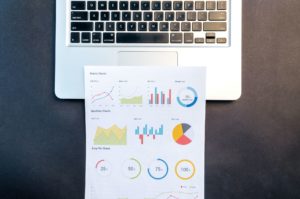Differences Between Business Intelligence and Business Analytics

We touched on the differences between Business Intelligence (BI) vs. Business Analytics (BA) in our last post. The two terms are often used interchangeably, according to Harvard University. However, they are separate disciplines, employing different strategies in the service of a common purpose: improving business outcomes.
Here’s how Business Intelligence differs from Business Analytics and how your organization should be using both to maximize efficiency and efficacy.
Business Intelligence is About Insight
The three V’s of big data (Volume, Velocity, Variety) ensure that organizations are inundated 24/7 with tons of undifferentiated data from sources as disparate as traffic sensors, point-of-sale terminals, Twitter, and TikTok. Buried within this data is a vast amount of information about who uses your services, how they use your services, and how they would like to use them. Business Intelligence is a discipline devoted to identifying and communicating the insights embedded in your data.
How do you assess the importance of each data point? First, by understanding that not every data point is created equal. By prioritizing clean data, BI helps organizations begin to sort more valuable data from less. BI helps users observe historical and current data trends with appropriate visualization tools, including volumes and demographics, while spotlighting operational insights, like pain points and inefficiencies.
BI is about apprehending the “as-is” point of your organization — the current situation — and maximizing existing processes. If you want to tap into the power of all the insights BI provides, it’s important to have ready access to the data for users throughout your organization. Self-service BI platforms have helped simplify data warehousing and cataloging so that Business Intelligence is no longer the sole realm of IT professionals. However, their success depends on the vigor of your IT infrastructure. If you feel like your IT approach might need a boost to help all your employees access, visualize and use the data you collect, it may be time to bring in a consultant.
Business Analytics is About Outlook
If your data stream is properly stored, tracked, and visualized (internal link), you are empowered to go beyond the status quo. You can also make data-driven decisions about new organizational initiatives. Business Analytics is the art of analyzing your as-is data, identifying root causes of current circumstances, and using the insights gathered to anticipate how your business would respond if you were to adjust certain conditions.
BA is predictive and prescriptive. It uses modeling, data mining, and machine learning in place of a crystal ball to predict future needs and trends, then makes recommendations for responsive change. If BI tells you how many complaints your constituents filed about parking enforcement issues, BA informs you on why those issues occurred (maybe a scanner that double-counted certain meter violations) and suggests programmatic shifts to help prevent the issue from recurring while increasing revenue streams from other sources.
Your Organization Needs Business Intelligence AND Analytics to Thrive
The reality is that BI and BA are symbiotic disciplines. The strategic decisions generated by Business Analytics rely on the data insights provided by Business Intelligence. Furthermore, the efficiencies enabled by BI grant thought leaders more time to spend on organizational change (because they’re spending less time on pedantic tasks). In turn, the strategic shifts articulated by BA can help improve the raw data stream BI relies on for insights. It’s a vital cycle of process improvement and outcome enhancement.
For example, Momentum helped a Pennsylvania nonprofit organization increase performance and strengthen all aspects of the organization by conducting an as-is study, providing a gap analysis to help outline and prioritize areas targeted for improvement, and then working with the Executive Director to create a roadmap for improvement. The results were increased efficiencies in financial reporting/training, budgeting, financial software, grant processing, information management, communication, security, and other daily operations.
Use BI and BA to Drive Organizational Success
We have briefly explored the differences between Business Intelligence and Business Analytics. Still, there is certainly much more to be learned about your data, where it comes from, and how to use it to drive improved business outcomes. A trained business analyst is often the best guide to making the most of data insights.
Want to know more about how BI and BA can work together to drive organizational success? Contact Momentum today.
 Tap to email
Tap to email
